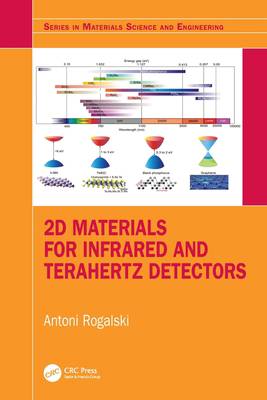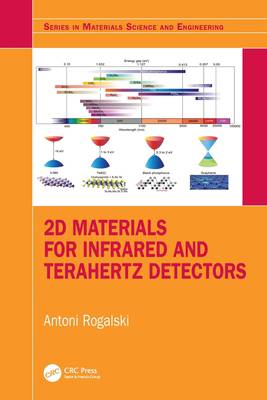
- Afhalen na 1 uur in een winkel met voorraad
- Gratis thuislevering in België vanaf € 30
- Ruim aanbod met 7 miljoen producten
- Afhalen na 1 uur in een winkel met voorraad
- Gratis thuislevering in België vanaf € 30
- Ruim aanbod met 7 miljoen producten
Omschrijving
2D Materials for Infrared and Terahertz Detectors provides an overview of the performance of emerging detector materials, while also offering, for the first time, a comparison with traditional materials used in the fabrication of infrared and terahertz detectors.
Since the discovery of graphene, its applications to electronic and optoelectronic devices have been intensively researched. The extraordinary electronic and optical properties allow graphene and other 2D materials to be promising candidates for infrared (IR) and terahertz (THz) photodetectors, and yet it appears that the development of new detectors using these materials is still secondary to those using traditional materials.
This book explores this phenomenon, as well as the advantages and disadvantages of using 2D materials. Special attention is directed toward the identification of the most-effective hybrid 2D materials in infrared and terahertz detectors, as well as future trends. Written by one of the world's leading researchers in the field of IR optoelectronics, this book will be a must-read for researchers and graduate students in photodetectors and related fields.
Features
- Offers a comprehensive overview of the different types of 2D materials used in fabrication of IR and THz detectors, and includes their advantages/disadvantages
- The first book to compare new detectors to a wide family of common, commercially available detectors that use traditional materials.
Specificaties
Betrokkenen
- Auteur(s):
- Uitgeverij:
Inhoud
- Aantal bladzijden:
- 248
- Taal:
- Engels
- Reeks:
Eigenschappen
- Productcode (EAN):
- 9780367489748
- Verschijningsdatum:
- 30/06/2022
- Uitvoering:
- Paperback
- Formaat:
- Trade paperback (VS)
- Afmetingen:
- 156 mm x 234 mm
- Gewicht:
- 376 g

Alleen bij Standaard Boekhandel
Beoordelingen
We publiceren alleen reviews die voldoen aan de voorwaarden voor reviews. Bekijk onze voorwaarden voor reviews.











